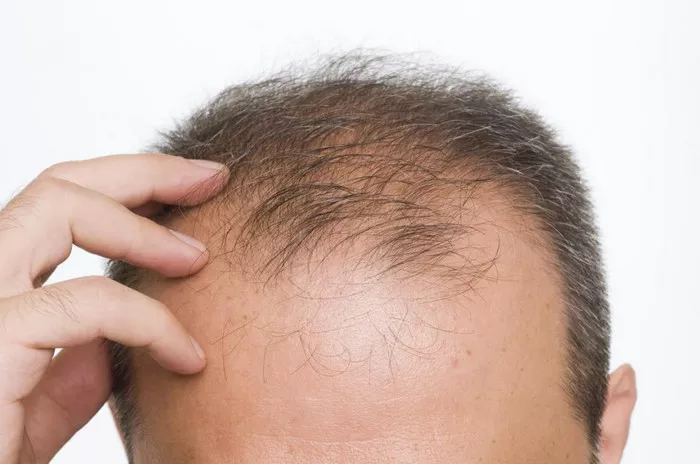Undergoing a hair transplant is a significant step towards restoring hair and regaining confidence. After the procedure, proper post-operative care is essential for optimal healing and hair growth. One common practice recommended by hair transplant surgeons is the use of saline water during the early recovery phase. In this comprehensive guide, we will delve into the benefits of saline water, its role in post-transplant care, and how long it should be used after a hair transplant.
Is it important to take care of your hair after a hair transplant?
It is crucial to take care of your hair after a hair transplant. Proper post-operative care plays a significant role in the success and long-term outcomes of the procedure. Following the surgeon’s instructions regarding cleansing, moisturizing, and protecting the scalp is essential for optimal healing and hair growth. Avoiding strenuous activities, protecting the scalp from the sun, and refraining from harsh hair treatments during the early recovery phase are also vital. By taking care of the hair and scalp after a hair transplant, patients can ensure the transplanted hair grafts thrive and achieve natural-looking results.
Understanding Saline Water
Saline water, also known as saline solution, is a mixture of sterile water and salt. It has been widely used in various medical fields for wound care and irrigation due to its gentle and non-irritating properties. In the context of hair transplants, saline water helps keep the scalp clean and moisturized without disrupting the delicate grafts.
The Immediate Post-Transplant Phase
In the immediate hours and days following a hair transplant, the scalp may be sensitive and require special care. Surgeons typically provide patients with specific instructions on how to use saline water during this period. Gentle spraying or dabbing the scalp with saline water can help remove dried blood and debris from the transplanted area without causing harm to the grafts.
Transitioning from Saline Water
As the healing progresses and the scalp becomes less sensitive, patients will gradually transition from using saline water as a primary cleaning method. Surgeons may recommend milder, non-abrasive cleansers suitable for the healing scalp. However, it’s essential to avoid harsh shampoos or vigorous rubbing during this transitional phase.
When to Use Salt Water?
The duration of saline water usage after a hair transplant varies depending on the individual’s healing progress and the surgeon’s recommendations. Typically, patients are advised to use saline water for the first few days after the procedure, with the frequency decreasing over time. By the end of the first week, most patients can switch to a milder cleaning routine as guided by the surgeon.
Precautions for using salt water after hair transplant
Using salt water after a hair transplant can be beneficial for keeping the scalp clean and promoting healing. However, certain precautions should be taken to ensure the best possible outcomes and avoid any potential complications. Here are important precautions to consider when using salt water after a hair transplant:
1. Follow Surgeon’s Instructions:
Always adhere to the specific instructions provided by your hair transplant surgeon regarding the use of salt water. Surgeons may have individualized post-operative care plans based on the type of procedure performed and the patient’s unique needs.
2. Use Sterile Saline Solution:
Ensure that the salt water solution is sterile and prepared properly. It is essential to use distilled water or boil water to make a saline solution and then allow it to cool before use. Using non-sterile water may increase the risk of infection.
3. Avoid Excessive Force or Pressure:
When applying salt water to the scalp, use a gentle spraying or dabbing motion. Avoid rubbing or applying excessive force, especially on the transplanted area. Vigorous rubbing can dislodge grafts and hinder the healing process.
4. Be Mindful of the Transplanted Area:
Take extra care when applying salt water around the transplanted hair follicles. Avoid direct pressure on the grafts and use a light touch to cleanse the surrounding area.
5. Don’t Overuse Salt Water:
While salt water can aid in cleaning the scalp, excessive use may cause dryness or irritation. Follow the surgeon’s recommendations on how often to use saline solution and gradually transition to milder cleaning methods as the scalp heals.
By taking these precautions, patients can use salt water safely after a hair transplant and support the healing process, ultimately leading to successful results and a positive hair restoration experience.
Conclusion:
Using saline water after a hair transplant is a crucial aspect of post-operative care. This gentle solution aids in keeping the scalp clean and moisturized during the early recovery phase, promoting optimal healing and hair growth. Following the surgeon’s instructions regarding saline water usage and transitioning to a suitable cleaning routine can contribute to successful results and a smooth recovery journey. By understanding the role of saline water in post-transplant care, individuals can embark on their hair restoration journey with confidence, armed with knowledge and an understanding of this essential aspect of the process.


